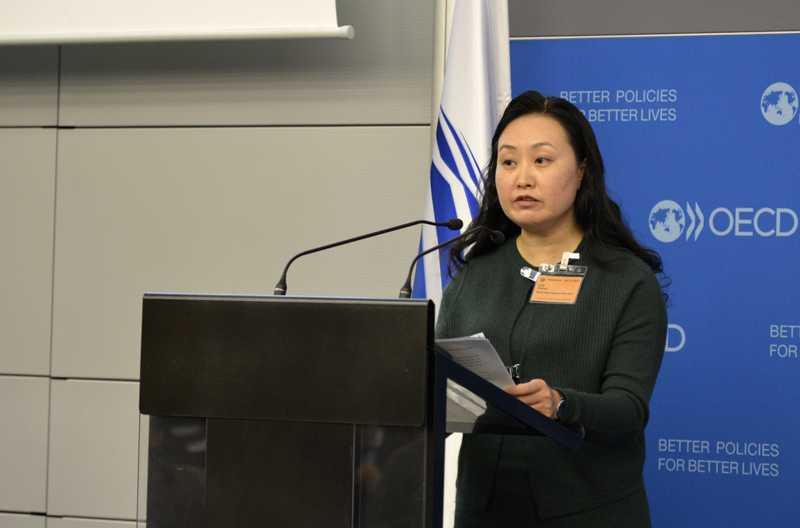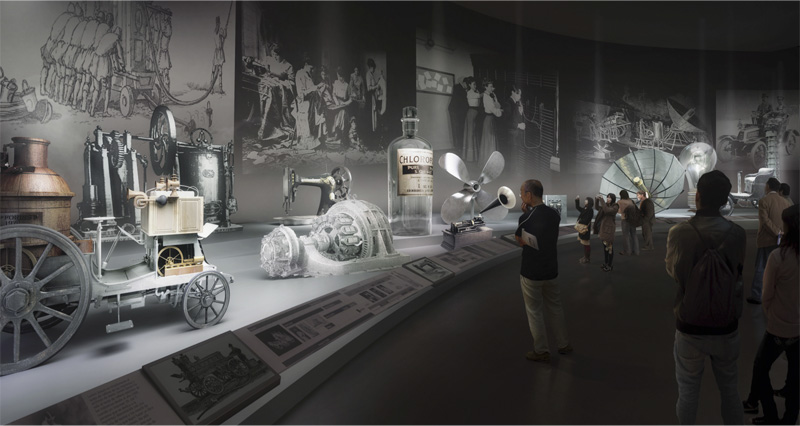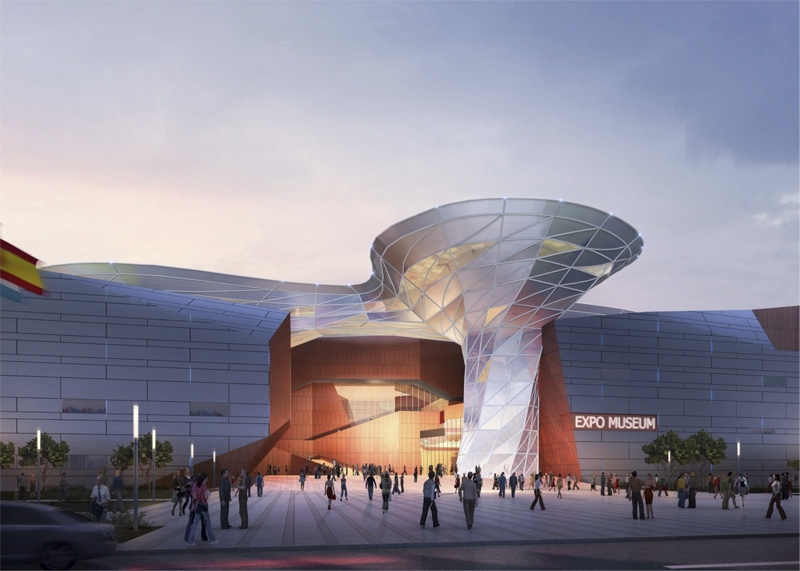The World Expo Museum, first museum dedicated to Expos, will open in Shanghai in 2016. Jointly developed with the BIE, the Museum will explain the concept and the philosophy of Expos, present their history and showcase Future Expos. The museum will also be the BIE official documentation centre.
Lorelei Liu, Director of the Museum, tells us about the content of the museum, its objectives, and how they are engaging with the local citizens and the international community to promote the project.

The key phrases of the museum are: "Window to the world", "dream of a nation", and "origin of innovation". Could you tell us in what way these three axes embody the essence of World Expos?
The content of the museum will be official and authoritative, which is why we have chosen 3 slogans that reflect the physical and tangible spirit of Expos.
Expos are "Windows to the World" because they are platforms where local citizens, foreign visitors and participants can discover the cultures of other countries. They are a space where nations from all over the world can showcase their social and cultural landmarks and present their innovations. A World Expo is like a mirror that reflects the development of society and the world civilization at a given time.
This gathering of countries brings forward cultural and innovative ideas, which brings us to the second key phrase "Origin of innovation". Innovation is part of the DNA of Expos, may it be technological or social innovation. Expos have witnessed breakthroughs in architecture as well as in women's rights or international traveling. Expos allow the development of future oriented ideas on the important themes for humanity.
Thirdly, "Dream of a nation" expresses the impetus given by Expos to local, regional and national development. Expos are a great source of diplomatic opportunities, economic exchanges and communication. With this message, we particularly target future Expos hosts.

The construction of the museum is well underway, could you tell us about the design concept?
The design concept is based on 2 main components: a rock valley and a cloud of glass. Together, they symbolize and combine history and future. The Rock Valley has a solid, stable aspect. It represents the past, the history of Expos. The Cloud has a more open and dynamic aspect. It symbolizes innovation, new ideas, the future.
The Museum will have 3 sections. Could you tell us about the curating process for each section?
The content of the museum is developed thanks to a close cooperation between the Museum and the BIE. We have put in place a joint working team, which will benefit from the collective wisdom of the Museum and the BIE experts. This team will keep to the principles of Expos and give an official and authoritative explanation of their history, their logic and their philosophy.
The 3 sections of the Museum are World Expo History, the participation of China to World Expos with an important focus on Expo Shanghai 2010 and future World Expos. The BIE will elaborate the content for the historical section, which will address many aspects of Expos such as international relations, economy and commerce, innovation, science and technology, urban planning, architecture, art and Expo themes. We are currently trying to increase our exhibit collection for this section and working on multimedia activities. For the section dedicated to Expo 2010 and China, we have a large collection of pieces. The third section will be an open space where new exhibitions will be held according to future expos. We will be in constant contact with future Expos in order to collect donations for the museum. We want to create a sustainable museum, open to new ideas.

A 3D image of what the history section could look like
What will be the key attractions or innovations of the museum?
3 key characteristics can differentiate the World Expo Museum from other museums in Shanghai and in the world:
First, it is truly International. Like Expos, the museum will be a window to the world and will allow citizens to learn about Expos and the development of society.
Secondly, it is future oriented. Its open spaces will welcome new content from future Expos. It won't be a static, but a dynamic and sustainable museum, open to the future.
And third, the museum will be open to the public and interactive. We position the museum not only as an academic centre but also as a cultural platform for citizens to come and participate in educational and cultural events, and in leisure experiences. For example, there might be lectures on Expo history, educational programs on future Expos and new innovative ideas, or "micro-diplomat" programs. The museum is designed to be as open and interactive as possible and welcoming for young people and all citizens.

Has there already been communication in Shanghai on the museum? How will you engage with the citizens before the opening?
Yes we have done extensive communication work. Actually, the Museum, whose objective is to pass on the legacy of Expos, preserve their essence and expand their effect, is the extension of Expo Shanghai 2010's communication plan.
This plan, developed in 2006, was divided in 5 stages. The last stages were called the "expand effect period".
An important element of this communication period is the launch, in September 2011, of a commemoration exhibition on Expo Shanghai 2010 that presents the highlights of the event and raises awareness on the upcoming museum. It has been open for over 3 years and a half and has welcomed 1,5 million visitors from Shanghai, China and abroad. This exhibition also allowed us to express our gratitude to the donating parties who gave over 20 000 exhibits from Expo 2010.
Another element of our campaign is the "routine" communication. We have an official website in Chinese and an English and a French version will be launched in the beginning of 2015. We also benefit from constant media coverage on key moments such as the beginning of the construction of the museum or our participation to Expo Yeosu 2012.
Our participation to all World and International Specialized Expos is the 3rd important aspect of our communication plan. It is a great way to engage with the international community and develop connections with the participants. At Expo 2012, more than 40 countries donated over 700 pieces to the Museum. It is also an important opportunity to conduct academia research on the events and exhibitions that take place during the Expo.
The Museum will be present in Milan. Could you tell us about this participation and how it will allow you to communicate on the Museum internationally, and also to gather new exhibition content?
In Expo Milan 2015, we will have a pavilion in a very central area of the site. We will present Expo history, the World Expo Museum and Future Expos, as well as special content related to the theme of Expo 2015. We will target visitors, participants, and the host country. We will also conduct an academic survey and research and ask for the support of participant countries to donate documents and collectibles to the museum. Signing ceremonies will be held for the donators. We will organize promotional events as well, in particular in June and on October 30th, which is the BIE day.